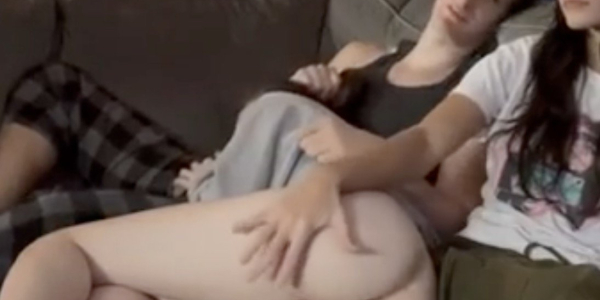"Huge Nato land army to meet Russian aggression" [Article The Times.uk]
Désolé les anglophobes, mais j'voulais demander l'avis de Chouals sur cet article, qu'en pensez vous?
Tu pourrais copié coller l'article en commentaire stp? Pour éviter qu'on ai besoin de s'inscrire.
il parle que l otan peut déployer 300 000 hommes a la frontière russe si il le faut vu que les anglo-saxons sont paranoïaque .
"Paranoïaque" ? mec écoute se qui se dit au parlement Russe, pis après l'invasion de l'ukraine et de la géorgie, je voit pas bien se qui empêcherait la Russie de s'en prendre au pays baltes.
Invasion de la géorgie ? Ho lol .
Invasion de l'Ukraine ? Ho lol .
Ils sont dans l'otan les pays Balte ?
La georgie a peut être attaquer et tuer des soldats Russe dans le nord ?
Et le président gerorgien qui est maintenant maire d'une ville Ukrainienne .
Le conseiller glucksmann raphaël bras droit de Mikheil Saakachvili .
Maintenant tous les deux en Ukraine .
Le truc que tu dois te dire .
Tu ne fais pas chier la Russie sans recevoir de coup de baton dans la geule .
"Hundreds of thousands of Nato troops will be put on a higher state of alert amid growing tensions with Russia, the head of the alliance has indicated.
Nato commanders want to prepare a substantial land force capable of deterring Russian aggression.
Jens Stoltenberg, the alliance’s secretary-general, did not give precise figures, but Sir Adam Thomson, Britain’s outgoing permanent representative to Nato, said he thought that the goal was to speed up the response time of up to 300,000 military personnel to about two months. At present a force of this size could take up to 180 days to deploy.
The troops would act as a “follow-on force” to Nato’s existing response force, which can be deployed to a warzone within days. The personnel will come from nations across the alliance, including Britain.
“We have seen Russia being much more active in many different ways,” Mr Stoltenberg, a former prime minister of Norway, told The Times.
“We have seen a more assertive Russia implementing a substantial military build-up over many years; tripling defence spending since 2000 in real terms; developing new military capabilities; exercising their forces and using military force against neighbours.
“We have also seen Russia using propaganda in Europe among Nato allies and that is exactly the reason why Nato is responding. We are responding with the biggest reinforcement of our collective defence since the end of the Cold War.”
The measures, drawn up after President Putin’s annexation of Crimea in 2014 and the conflict in east Ukraine, include the deployment of 4,000 Nato troops — almost a quarter of them British — to Estonia, Latvia, Lithuania and Poland from next year.
Nato has also already created an emergency response force of 5,000 ground troops, backed by air, sea and special forces, which is able to mobilise within five days.
In addition, the 28 member states agreed to triple the size of an incumbent response force to 40,000 troops. They can be moved in quickly as reinforcements after the initial wave. Mr Stoltenberg said that Nato was now looking at improving the readiness of many of the alliance’s three million soldiers, sailors, airmen and Marines.
“We are . . . addressing what we call the follow-on forces,” he said. “There are a large number of people in the armed forces of Nato allies. We are looking into how more of them can be ready on a shorter notice.” He added that the issue had been discussed at a meeting of Nato defence ministers last month.
Sir Adam, who stepped down from his Nato role last Thursday, said that all allies had agreed that it was necessary to increase the ability of large numbers of troops across the alliance to deploy.
“I am not sure that everyone has realised how difficult and how expensive it is going to be, but it is part of that concept agreed in February of this year,” Sir Adam said, referring to a previous meeting of defence ministers.
After the Soviet Union collapsed, defence budgets in most member states of Nato were slashed and militaries reduced. Most of those forces still in uniform were put on a lower state of readiness. By contrast, Russia has continued to train its military at scale, with exercises of more than 100,000 personnel taking place each year.
Nato is also responding to an increase in espionage, hybrid warfare and cyberattacks by Russia and other non-Nato states. One step has been the creation of an intelligence division, headed by an assistant secretary- general of intelligence.
Mr Stoltenberg said that it was important for Nato and Russia to keep communicating. The two sides hope to hold a meeting under a mechanism called the Nato-Russia Council in the coming weeks, the third this year."
Toujours les mêmes conneries : les russes et les ricains se provoquent depuis des décennies et les européens sucent les ricains en faisant semblant de déployer des défenses. Mais dans les faits la présence militaire (en hommes) ne sert à rien, car personne ne bougerait en cas d'agression (cf l'Ukraine) et si il devait se passer quelque chose ce serait des missiles qui passeraient au-dessus (et sur) nos têtes.

!["Huge Nato land army to meet Russian aggression" [Article The Times.uk]](https://static.choualbox.com/mini?src=https://static.choualbox.com/Img/147854045197.jpg&zc=1&w=400&h=300)